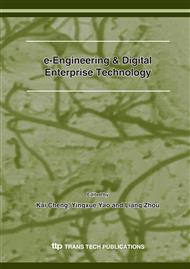p.842
p.850
p.855
p.860
p.864
p.869
p.874
p.879
p.884
Simulation of Substrate Temperature Distribution in Diamond Films Growth on Cemented Carbide Inserts by Hot Filament CVD
Abstract:
Three-dimensional finite element simulations were used to investigate the influences of various hot filaments and other deposition parameters on the temperature field of substrates which affect significantly the growth and quality of diamond films by hot filament chemical vapor deposition (HFCVD) and based on the simulation results, the optimum position for diamond deposition was found. In the experiment, six cemented tungsten carbide inserts were used as substrates and placed on the workbench in the CVD reactor to deposit diamond films. According to the temperature distribution on substrates measured by thermocouple fixed in CVD reactor, the simulations were validated and the optimum arrangement of substrates was established from the simulation results. In addition, the simulation model was altered to optimize the process parameters of HFCVD deposition, and an improved process of depositing diamond films with high quality was obtained in order to achieve the great surface morphology, which laid the foundation of developing a new method to arrange the substrates in the CVD reactor for depositing diamond films.
Info:
Periodical:
Pages:
864-868
Citation:
Online since:
December 2007
Authors:
Price:
Сopyright:
© 2008 Trans Tech Publications Ltd. All Rights Reserved
Share:
Citation:


